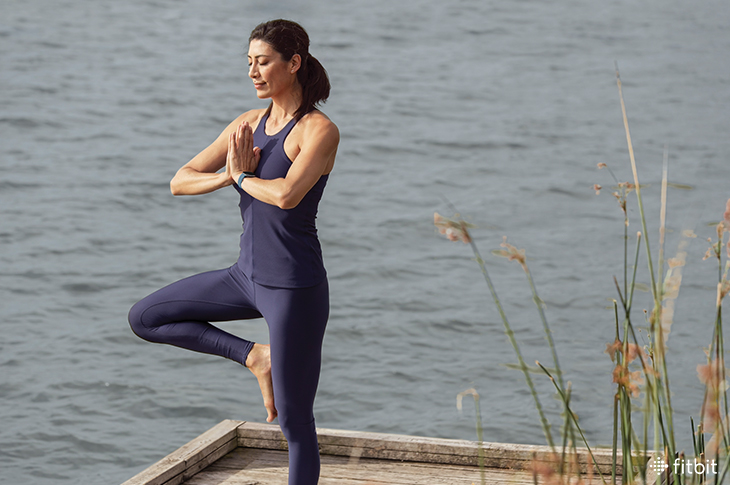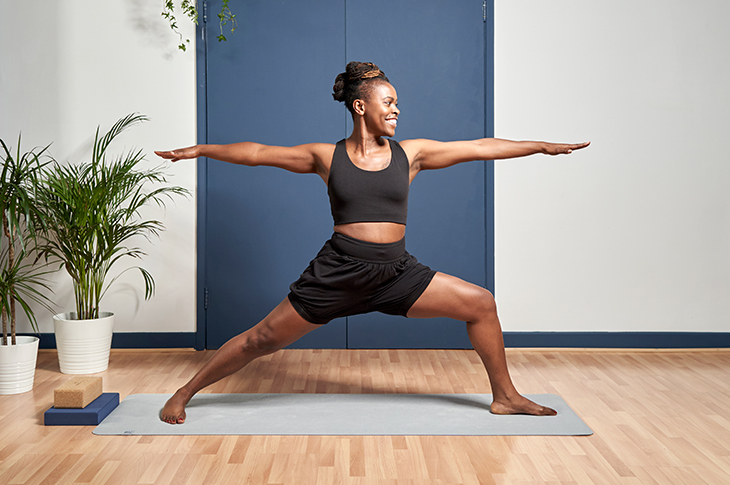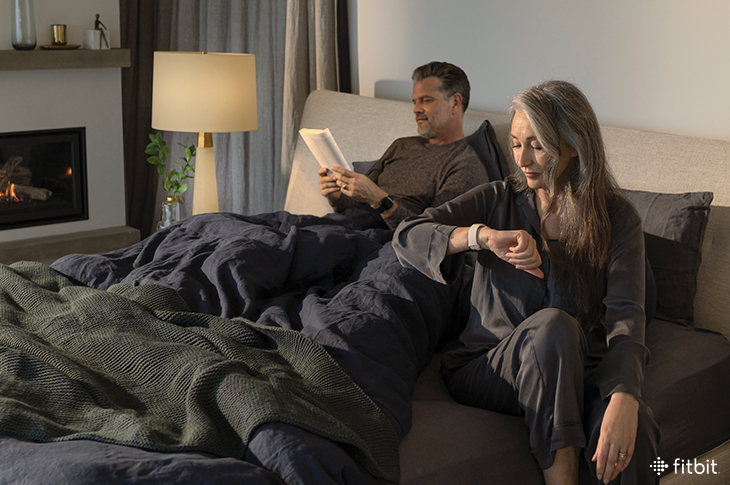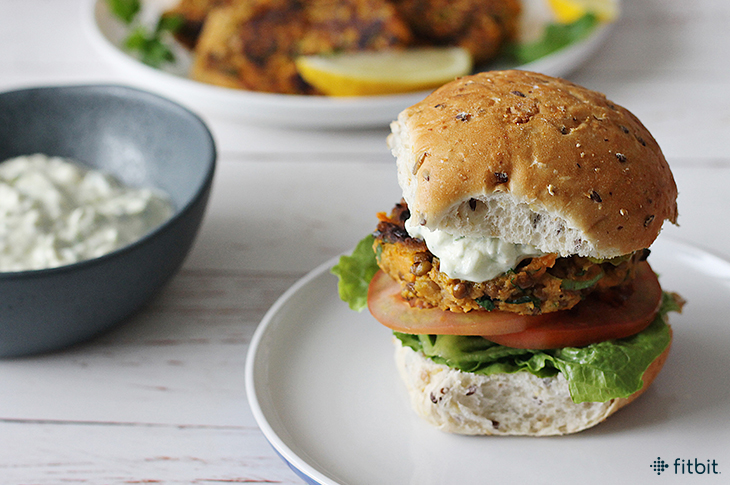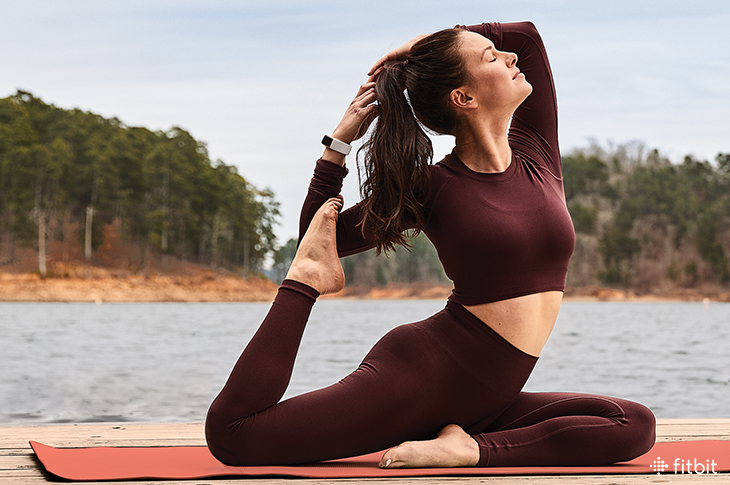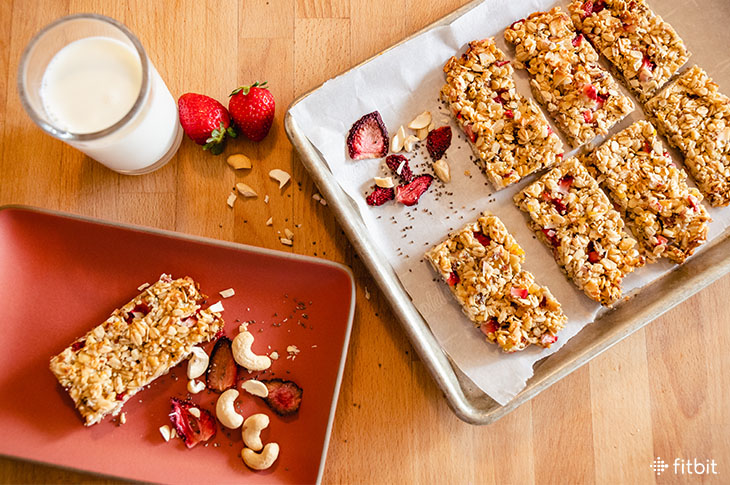Everyone experiences stress from time to time. When most people think about stress, the first thing that comes to mind is the feeling of mental tension in the face of life’s challenges. But stress is much more broad than that. It is the body’s normal response to anything that throws it out of balance. It has a physical response (sweaty skin and racing heart) and an emotional response (worry, excitement, or frustration), and it can be caused by a variety of triggers ranging from “negative” events (big work deadline) to “positive” events (exciting vacation) to physical activity or injury and stimulating substances like caffeine, nicotine, or others.
Stress can actually be helpful in small doses, like to help meet a deadline or to avoid danger, but chronic stress can negatively affect your health and well-being. That means that managing stress, so that it doesn’t become chronic, is an important part of a healthy lifestyle.
The Fitbit Stress Management experience helps you to develop greater awareness of both your physical signs of stress and your moods, so that you can begin to understand how your stress typically presents and what may trigger it. In addition, it helps you to identify and focus on behaviors that may help to decrease both your physical and psychological stress response. Below are some common ways to manage stress or build resilience to future stress events.
Mindfulness
Mindfulness is the ability to be fully present, aware of where we are and what we’re doing, and not overly reactive or overwhelmed by what’s going on around us. Meditation, as most of us know, is a way to practice and cultivate mindfulness. Engaging in brief mindfulness meditation practice for as little as ten minutes a day can help you bring a present-moment focus and sense of calm to the rest of your day. Read more posts on how to cultivate mindfulness here.
Practicing mindfulness can help you sleep better, improve resilience to stress, enhance your ability to focus, and lower your heart disease risk. Research has also shown mindfulness meditation can help reduce symptoms of anxiety and depression. Plus, meditation changes our brain and biology in positive ways, improving mental and physical health. Sustained mindfulness practice over time has been shown to change the way your brain responds to emotional stressors enabling you to face challenges with more calm, clarity, and focus.
How Fitbit can help: Set a weekly target in the Fitbit app of days per week to practice mindfulness. Access different types of mindfulness and meditation sessions from the Discover and Mindfulness sections and track your progress. Bookmark your favorites for easy access to sessions you like best.
You can see how your HR (and EDA if applicable) change throughout your sessions and reflect on your stress level. Depending on your Fitbit device, you can also leverage the Relax app for guided breathing or the EDA Scan app to learn more about your body during a mindfulness or meditation session.
Mood logging
Identifying your moods can improve your understanding of what triggers your emotions. It can help to decrease the intensity of your emotions, in addition to the stress on your body from the adverse experience and help you influence those emotions.
Said differently, taking a step back from feeling ‘stressed’ to really hone in on your feelings—anger, worry, excitement—can help you reframe the situation in a way that puts you in more control. Emotional awareness has been shown to help strengthen your brain and build resilience to future stress.
How Fitbit can help: Log your mood after mindfulness sessions as well. You may start to identify trends to help you better manage stress. See how your moods vary throughout the day and whether they align with your Stress Management Score. You may identify trends which can influence your future behavior.
Active Zone Minutes
The positive impact of physical activity on both the emotional and physical components of stress is exciting. As little as 10 minutes of exercise is enough to improve mood, and 30 minutes of moderate to vigorous physical activity can improve mood for up to 24 hours.
Exercise also helps to fight depression and may be as effective as antidepressant medications. It also lowers stress hormones that are part of the physical stress response and lowers blood pressure.
The impact of physical activity is fascinating because it is actually a trigger of physical signs of stress in the short-term, but it counteracts many of the factors that impose long-term stress upon our minds and bodies. In essence, it is believed that it trains the body to more effectively handle stress by challenging it with small bouts. It increases blood flow in the brain and stimulates the release of hormones and chemical messengers like endorphins, endocannabinoids, and serotonin that stimulate brain function and enhance our mood. Its beneficial effects are even more broad than improving mood with improvements in alertness, cognition, memory, sleep, and well-being. It also boosts metabolism, reduces fatigue, and combats inflammation.
How Fitbit can help: Fitbit’s Active Zone Minutes (AZM’s) feature allows you to track the amount of moderate to vigorous physical activity that you get, regardless of the way you like to exercise, as it uses the same definitions for heart rate zones as the national guidelines for physical activity.
Set a goal to make improvements in your AZM’s and challenge your friends through one of our games, leverage our wide variety of workout videos, or take advantage of any of our other physical activity features.
Steps
If walking is your preferred exercise, the news is good, because even small amounts of movement are better for your body, and your stress, then none. Even a short bout of walking, e.g. 10 minutes, can improve mood.
It is not just the physical activity component of walking that provides the benefit, but also the impact of being in nature, as the effects on reducing stress are greatest when walking in a natural environment compared to urban areas.
How Fitbit can help: Track your steps with a Fitbit device or connect your mobile phone to the app. Track steps. Set goals. Get reminders. You can also participate in walking challenges with friends and leverage the Reminders to Move feature to help break up periods of inactivity in your day.
Sleep
21 percent of adults say they feel more stressed when they don’t get enough sleep. In order to get all of the physical and mental benefits of sleep, experts suggest that most individuals prioritize at least 7 hours of sleep per night.
Sleep not only gives your mind and body an opportunity to rest and recover, but also allows your brain some time to disconnect and perform the essential processes necessary for working through life’s complex issues and doing a bit of housekeeping that helps you prepare for the next day’s challenges.
Even if it’s time for bed, it can be challenging to fall asleep if you’re not physically and mentally ready. It can be helpful to start by allowing at least an hour of buffer before your sleep period to get ready for bed. However, adding practices to your pre-bedtime routines that help quiet the mind and calm the body can serve to prepare you for an on-time sleep. If a racing mind is disrupting your sleep, you can consider trying a meditative practice, like mindfulness or guided imagery, to help focus your mind and keep it from spinning off in random directions. In contrast, if you’re feeling too energized to drift off, then things like breathing exercises, sleep yoga, or progressive muscle relaxation (PMR) might be the signal your body needs to know that it’s time for rest.
How Fitbit can help: Check out the Sleep section in the app to learn more about how you’re sleeping so you know where you can improve. Try meditations designed specifically to help you fall asleep and stay asleep. Learn if noise or snoring is impacting your sleep quality so you can take steps to mitigate its impact. Set bedtime reminders and use Smart Wake as a less jarring alarm clock.
Nutrition
Dietary patterns emphasizing whole foods (fruits and vegetables, nuts, fish) and minimizing processed foods and animal products are associated with lower risk of depression, anxiety, and stress.
However, stress can trigger our drive for comfort food, including excess sugar-sweetened beverages and sweets such as baked goods. Trying to balance these competing triggers can be difficult. Try to be mindful about your eating habits and their relationship to stress so that you can work on developing habits to maintain healthy eating.
How Fitbit can help: Try food logging in the Fitbit app to learn more about your food choices and their nutritional value. Try to limit highly processed foods and focus on whole foods, including fruits and vegetables, for optimal physical and emotional health.
The post These Healthy Habits Will Help You Build Your Resilience to Stress appeared first on Fitbit Blog.

